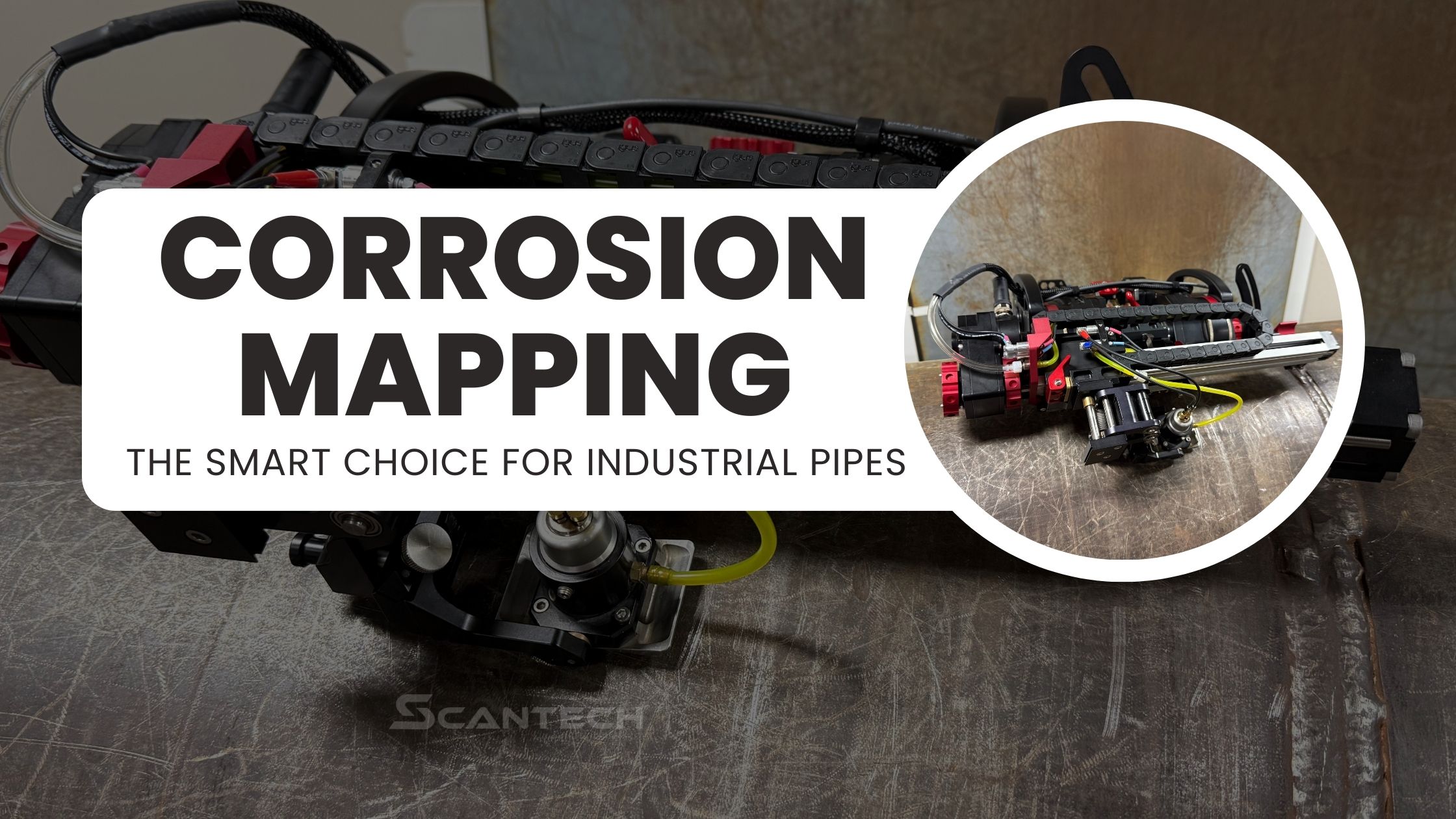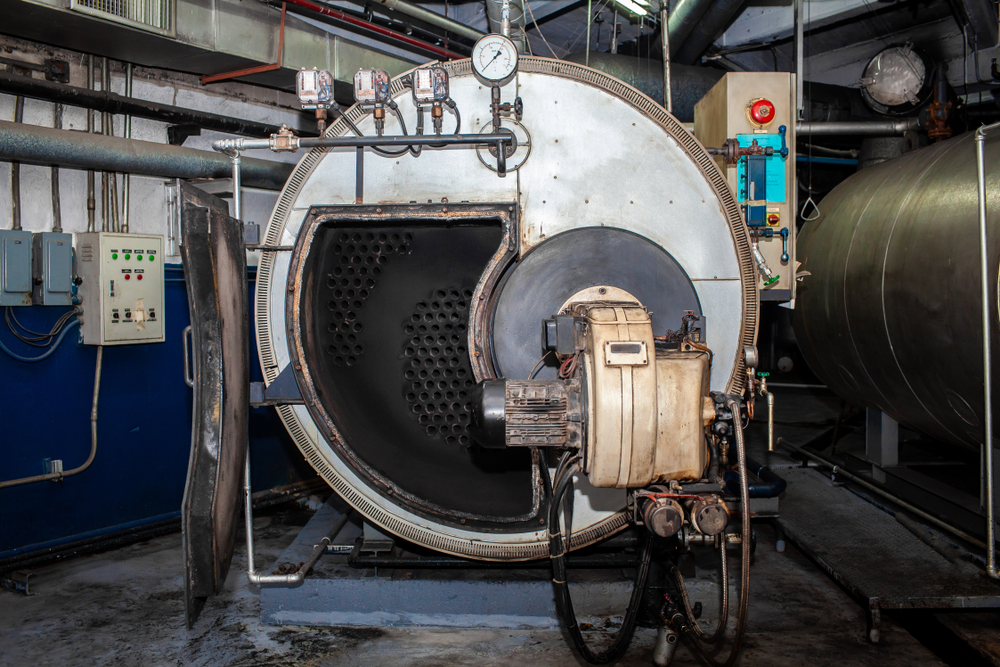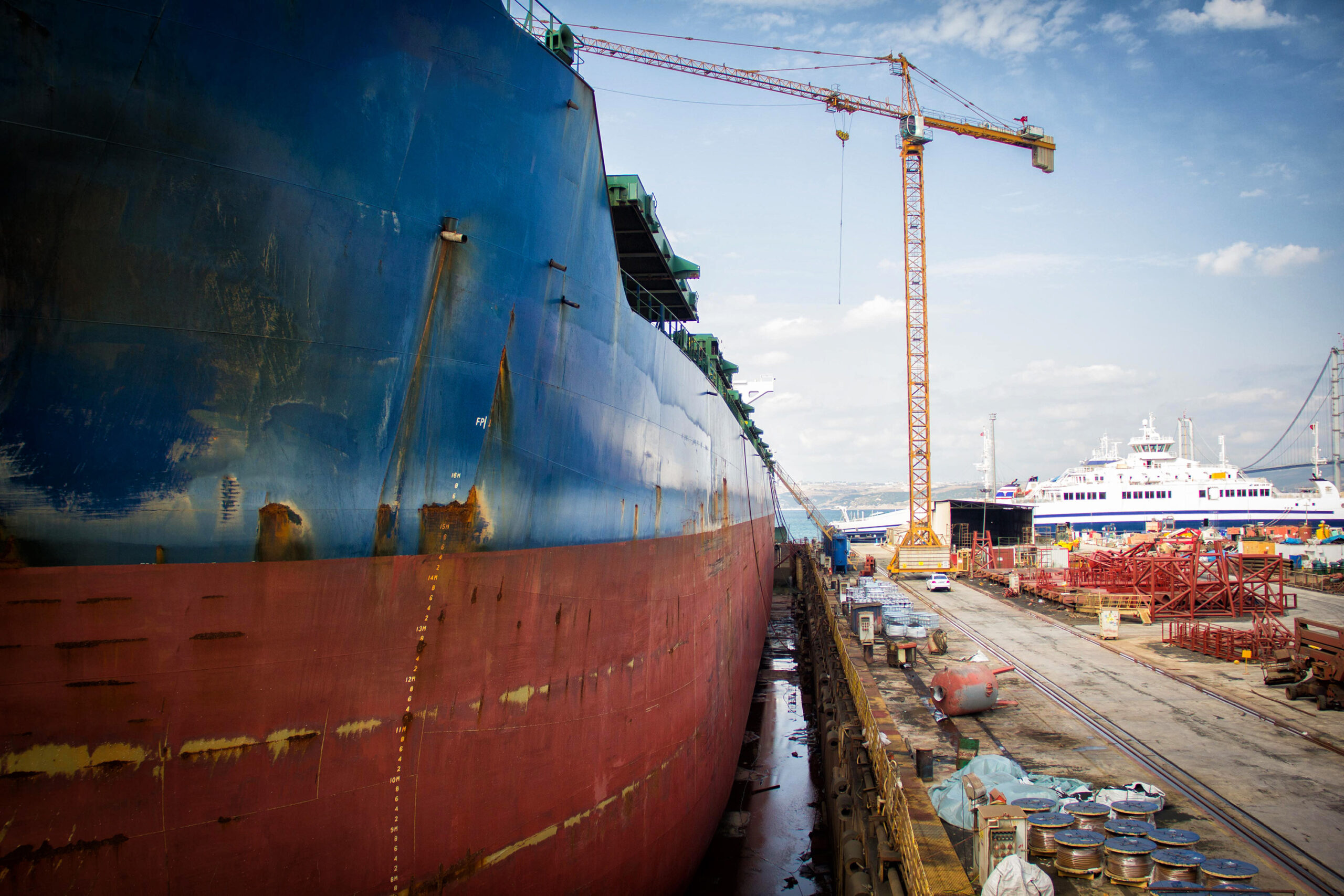Table of Contents
What is Nondestructive Testing (NDT)?
Nondestructive Testing (NDT) is a vital process used across multiple industries to evaluate the properties and integrity of materials, components, or structures without causing damage. By using advanced inspection techniques, NDT allows manufacturers, engineers, and quality control professionals to detect defects and ensure safety while preserving the usability of the tested object.
What is nondestructive testing used for?
Nondestructive testing is used to evaluate materials, components, or structures without causing damage, ensuring their integrity while preventing failures.
What industries rely on NDT the most?
Aerospace, oil & gas , construction, automotive, and power generation sectors depend on NDT for safety and quality control. Even specialized fields like pulp & paper and maritime shipping rely on NDT inspections to ensure equipment integrity and prevent accidents.
Why is Nondestructive Testing Important?
NDT plays a crucial role in industries where structural integrity and reliability are paramount. From aerospace and automotive manufacturing to oil and gas pipelines, bridges, and nuclear plants, NDT helps prevent costly failures, improve safety, and comply with industry regulations . In safety-critical sectors, regular NDT inspections can mean the difference between smooth operations and catastrophic incidents.
Quick Fact: The origins of nondestructive testing can be traced back to World War I, when early methods like X-ray inspection were used to examine military equipment for hidden defects .
What is the Difference Between Destructive & Nondestructive Testing?
One key distinction is that destructive testing (DT) involves damaging or destroying the test specimen to evaluate its characteristics, whereas nondestructive testing (NDT) leaves the object intact. The comparison below highlights major differences:
Because NDT causes no harm to the object being tested, it allows continuous inspection and monitoring without sacrificing the component’s integrity. This makes NDT ideal for recurring safety checks in manufacturing and maintenance.
1. Fundamentals of NDT
Modern NDT tools, such as advanced ultrasonic scanners, can produce detailed C-scan images of structures. In this image, areas of corrosion inside a pipe are highlighted in red, demonstrating how NDT reveals hidden defects. This capability allows inspectors to assess damage without physically cutting into the material.
How Does NDT Work?
NDT techniques work by applying various physical principles—such as sound waves, electromagnetic fields, or radiation—to detect internal or surface-level flaws in materials . The method chosen depends on factors like material type, defect type, and industry requirements. For example, ultrasonic waves can uncover internal cracks, while magnetic fields can reveal surface discontinuities in ferrous metals.
Advantages of NDT
- Prevents equipment failures by detecting issues before they become catastrophic
- Saves money by avoiding costly repairs or replacements
- Improves safety by ensuring compliance with industry regulations
- Reduces downtime, since inspections can be done without halting operations
Challenges of NDT
- Requires specialized training and certification for technicians
- Some methods are limited to certain materials or defect types
- Interpretation of results can be complex and may require expertise
Frequently Asked Questions:
How does NDT prevent equipment failure?
By detecting cracks, corrosion, and defects early, NDT helps companies avoid catastrophic failures, expensive repairs, and unplanned downtime .
Is nondestructive testing 100% accurate?
While NDT methods are highly reliable, accuracy depends on the technique used, the technician’s skill, and the equipment quality. Even the best methods may miss very small flaws, so multiple techniques are sometimes combined for critical inspections.
2. Types of Nondestructive Testing (NDT) Methods
NDT includes various inspection techniques, each suited for different materials and defect types. Below are some of the most common NDT methods used across industries:
Visual Inspection (VT)
Direct visual examination, often using aids like magnifiers, borescopes, fiber optic cameras, or drones .
- Best for: Detecting surface-level cracks, corrosion, misalignments, and welding defects.
- Industries: Manufacturing, construction, infrastructure maintenance.
Frequently Asked Questions:
What tools are used in visual inspection?
Common visual tools include magnifying glasses, borescopes for internal views, fiber-optic cameras, and even drones for hard-to-reach areas .
Ultrasonic Testing (UT)
A portable ultrasonic scanner traverses a pipe to perform a corrosion inspection. Ultrasonic Testing uses sound waves to find internal flaws, and automated scanners (like ScanTech’s XR Spider) can greatly speed up this process.
Uses high-frequency sound waves (typically via an ultrasonic scanner) to detect internal defects within a material.
- Best for: Identifying cracks, voids, or thickness variations hidden inside metals, plastics, composites, and ceramics.
- Industries: Aerospace, pipelines , shipbuilding, medical device manufacturing.
Frequently Asked Questions:
Can ultrasonic testing detect internal defects?
Yes. Ultrasonic waves penetrate materials and reflect from flaws, allowing detection of internal cracks, voids, and thickness changes .
What materials can be tested using UT?
A wide range—metals, plastics, composites, and ceramics can all be evaluated with ultrasonic testing.
Radiographic Testing (RT)
Uses X-rays or gamma radiation to produce images of internal structures (similar to a medical X-ray).
- Best for: Detecting voids, cracks, and welding defects inside thick or complex materials that ultrasound might not easily penetrate.
- Industries: Oil & gas, aerospace, nuclear power, and manufacturing .
Frequently Asked Questions:
Is radiographic testing safe?
When performed properly, RT is safe. However, technicians must follow strict radiation safety protocols (such as shielding and area exclusion) to protect themselves and others.
Magnetic Particle Testing (MT)
Uses magnetic fields and fine iron particles to reveal surface and near-surface cracks in ferromagnetic materials.
- Best for: Identifying surface and slightly subsurface defects (like cracks or seams) in iron, steel, and other ferrous metals.
- Industries: Automotive, railroad, shipbuilding — any sector dealing with large steel structures or components .
Frequently Asked Questions:
Can magnetic particle testing find all defects?
MT is excellent for surface-breaking flaws in ferrous metals, but it cannot detect internal defects deep inside a part. It’s often used alongside other methods (like UT or RT) for a more complete inspection.
Other NDT Methods
In addition to the above, other common NDT methods include Liquid Penetrant Testing (PT), which uses special dyes to highlight surface cracks; Eddy Current Testing (ET), which employs electromagnetic induction to find flaws in conductive materials; and Acoustic Emission (AE), which monitors for sound waves emitted by growing cracks or leaks. Each of these techniques follows the same core principle of detecting defects without harming the test object, and they are chosen based on the material and type of flaw of interest.
3. Applications of Nondestructive Testing in Industries
NDT has critical applications in a wide array of industries. By catching defects early, it helps avoid accidents and maintain regulatory compliance in the following sectors:
Aerospace Industry
In aerospace manufacturing and maintenance, NDT ensures that aircraft wings, fuselages, engines, and landing gear are free of hidden defects. Even microscopic cracks or material thinning can compromise flight safety, so techniques like UT and eddy current testing are routinely used on airframes and engine components.
Common methods: Ultrasonic Testing (UT), Eddy Current Testing (ET), and X-ray radiography for composite structures.
Why is NDT critical in the aerospace industry?
Aircraft components must withstand extreme stress and cyclic loads. NDT ensures no hidden defects compromise flight safety by inspecting everything from turbine blades to structural beams without weakening them.
Oil & Gas Industry
In the oil & gas industry , NDT is vital for inspecting pipelines, pressure vessels, and refineries for cracks, corrosion, and leaks. Regular NDT inspections prevent environmental disasters and equipment failures by ensuring that pipes, tanks, and welds maintain their integrity over time.
Common methods: Radiographic Testing (RT) for pipeline welds, Magnetic Particle Testing (MT) for drilling equipment, and ultrasonic corrosion mapping for tank walls.
How does NDT help in oil and gas pipelines?
NDT methods detect corrosion, cracks, and weld defects in pipelines, preventing leaks and catastrophic pipeline failures . For example, pipeline operators use ultrasonic and radiographic testing to find thinning or cracking long before a leak occurs.
Construction & Infrastructure
For bridges, buildings, and critical infrastructure, NDT is used to check structural elements without cutting into them. Inspectors might use ultrasonic testing to measure the thickness of bridge pins, or infrared thermography to spot hidden water damage in concrete.
Common methods: Ultrasonic Testing (UT) for metal beams, Ground Penetrating Radar (GPR) for concrete, and Thermographic Testing for detecting moisture or delamination in structures .
Why is NDT important for infrastructure?
Bridges, highways, and buildings experience wear and stress over years. NDT allows engineers to find internal cracks or weaknesses in materials like steel and concrete early on, ensuring public safety and guiding maintenance before failures occur.
Other Industry Examples
Beyond the industries highlighted above, NDT is also essential in many other fields:
- Power Generation: In power plants (including fossil, hydro, and nuclear), NDT checks turbines, generators, and boilers for fatigue or corrosion. For instance, ultrasonic and radiographic inspections are done on turbine blades and welds to prevent downtime in power generation facilities.
- Pulp & Paper: Paper mills use large pressure vessels and pipelines in the pulping process. Regular NDT inspections (using UT thickness measurements and MT for crack detection) on recovery boilers and digesters help avoid leaks or explosions in the pulp and paper industry.
- Maritime & Shipping: The maritime sector relies on NDT to inspect ship hulls, off-shore platforms, and cargo containers for structural integrity. Techniques like ultrasonic hull thickness gauging and magnetic particle inspection of welds keep maritime shipping vessels safe at sea.
In each industry, NDT techniques are tailored to the specific materials and failure modes of that sector – but the goal is always the same: detect problems early, before they lead to costly or dangerous failures.
4. NDT Equipment & Emerging Technology
Staying at the cutting edge of NDT means adopting new tools and technologies that make inspections faster, safer, and more accurate. Some of the latest trends include:
- Automation and Robotics: Robotic crawlers and scanner systems can perform repetitive or hazardous inspections (like climbing large tanks or crawling inside pipes) without direct human involvement.
- Drones for Inspections: Unmanned aerial vehicles equipped with NDT sensors (cameras, thermal imagers, etc.) can quickly survey bridges, wind turbines, and chimneys, capturing data from angles difficult or dangerous for people to reach.
- AI-Powered Data Analysis: Artificial intelligence and machine learning are being used to automatically recognize defect patterns in NDT data (such as identifying crack indications in an ultrasonic scan or anomalies in an X-ray image), improving reliability and speed of analysis.
- Real-Time Monitoring: Sensors permanently installed on structures (like acoustic emission sensors on bridges or strain gauges on machinery) can provide continuous, real-time NDT data to predict failures before they happen (a practice known as predictive maintenance).
Drone technology is an emerging tool in NDT. Equipped with cameras or sensors, drones can inspect large structures (like this storage tank) from the air, reducing the need for manual climbing and improving safety during inspections.
Frequently Asked Questions:
What are the latest advancements in NDT?
Recent advancements include AI-powered defect recognition (software that automatically flags potential flaws), robotic scanners and drones for automated inspections, and improved portable equipment that delivers instant results in the field . These technologies are making NDT more efficient and capable than ever.
How will NDT evolve in the future?
Expect to see increased use of autonomous inspection robots, broader adoption of drones especially for large infrastructure, and more integration of NDT data with predictive maintenance systems. As materials and manufacturing advance (e.g., 3D-printed components), NDT methods will also adapt to inspect these new technologies for quality assurance.
5. NDT Standards & Certifications
To ensure reliable results, NDT technicians must be properly trained and certified. Various national and international organizations set standards for how NDT is performed and how personnel are qualified. The most recognized certifications and standards include:
- ASNT – American Society for Nondestructive Testing: The ASNT provides recommended practices and certification guidelines for NDT personnel.
- SNT-TC-1A: An ASNT recommended practice outlining the training, experience, and examination requirements for Level I, II, and III technicians. Many companies base their in-house certification programs on SNT-TC-1A.
- Level I: Qualified to perform specific calibrations and NDT tasks, and record results under supervision of a Level II or III.
- Level II: Qualified to set up and calibrate equipment, conduct tests, interpret and evaluate results, and supervise Level I personnel.
- Level III: Qualified to develop and approve NDT procedures, establish techniques, interpret codes/standards, and train/examine Level I and II personnel.
- ASNT Central Certification Program (ACCP): A central certification that certifies individuals to ASNT Level II or III, recognized internationally.
- Additional ASNT Certifications: ASNT also offers method-specific certifications (e.g., for Liquid Penetrant Testing or Radiographic Film Interpretation), which validate an individual’s expertise in a particular NDT technique.
- Other Common NDT Certification Programs:
- NAS 410: A standard for NDT certification in the aerospace industry (popular with aviation manufacturers and maintenance).
- CP-189: An ASNT standard detailing requirements for employer-based certification of NDT personnel (often used alongside or as an alternative to SNT-TC-1A).
- ISO 9712: An international standard for central certification of NDT personnel, widely recognized across Europe and Asia.
- EN 4179: A European/Aerospace standard (similar to NAS 410) for qualifying and certifying NDT staff in aerospace manufacturing and maintenance.
- CGSB: Canada’s General Standards Board certifications for NDT, required for work in industries like petrochemical and aerospace within Canada.
What Certifications Are Needed for NDT?
The required certification depends on the industry and the employer. In many cases, employers follow SNT-TC-1A or CP-189 to certify their NDT technicians to Level I, II, or III in specific methods. For certain industries (like transportation or aerospace), having an ISO 9712 or NAS 410 certification may be necessary to meet regulatory requirements. It’s important for technicians to obtain the certification that aligns with their career goals and the sector they wish to work in.
How to Become an NDT Technician?
- Complete an NDT training program: Begin by taking courses (often available through technical schools or training organizations) that cover theory and practical skills in various NDT methods.
- Gain on-the-job experience: Most certifications require a minimum number of hours of hands-on experience under a qualified supervisor. Apprenticeships or entry-level positions help in meeting these hours while learning the trade.
- Pass the certification exams: Finally, take the relevant NDT certification exam(s) for the methods you’ve trained in. This typically includes a written test and a practical demonstration of your NDT skills. Successfully passing certifies you at a certain level (I, II, or III) for that method.
Frequently Asked Questions:
What are the levels of NDT certification?
Generally, Level I is entry-level (can perform tests under supervision), Level II is intermediate (can perform and interpret tests independently, and supervise Level I), and Level III is advanced (can establish programs, train others, and is an expert in the method) .
How long does it take to get NDT certified?
It varies. For a Level I in a single method, it might take a few weeks of training and a few months of experience. Higher levels and multiple method certifications can take several months to a few years in total, as you accumulate the required experience and training hours before examination.
6. FAQs on Nondestructive Testing (NDT)
Even with a solid understanding of NDT, you may still have some questions. Here are answers to a few frequently asked questions about nondestructive testing:
What is the most commonly used NDT method?
Two of the most widely used methods are Ultrasonic Testing (UT) and Visual Testing (VT) . UT is popular due to its versatility in finding internal defects in many materials, while simple visual inspection is always the first line of defense. Magnetic Particle and Liquid Penetrant testing are also very common for detecting surface cracks, depending on the industry.
How often should NDT be performed?
The frequency of NDT inspections depends on industry standards and the criticality of the equipment. For example, aircraft components might be inspected after a set number of flight hours, while pressure vessels in a plant might be inspected annually or as dictated by codes. Following guidelines such as those from API (for petrochemical tanks/pipelines) or FAA (for aircraft) ensures inspections are done at proper intervals .
Is NDT expensive?
It depends on the method and scale of testing. Some quick methods like dye penetrant or basic ultrasonic testing are relatively affordable, especially compared to the cost of a failure. Other techniques, like radiographic testing, can be more expensive due to the need for radiation-safe setups and specialized equipment . Overall, NDT is cost-effective when you consider the potential costs of not detecting a problem early.
7. Ensure Accuracy & Efficiency with the Right Equipment
Nondestructive testing is a critical process that ensures safety, reliability, and efficiency in industries worldwide. Whether you’re an engineer, inspector, or business owner, understanding and implementing the right NDT methods can prevent failures, save money, and protect lives. Equally important is using the right NDT equipment to carry out these inspections—modern scanners, probes, and software can greatly improve the accuracy and speed of defect detection.
Why NDT is the Future of Safety and Innovation
NDT continues to be indispensable, driving innovation and safety across industries by ensuring material integrity, improving reliability, and preventing catastrophic failures. As technology evolves, NDT will remain crucial to the future of industry safety and innovation.
Not sure which ultrasonic testing system is right for your needs? Contact us today to discuss your application and find the best testing equipment for your requirements!





